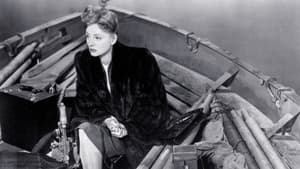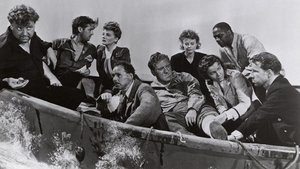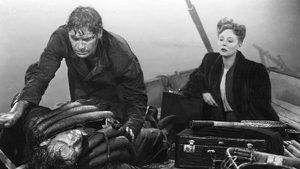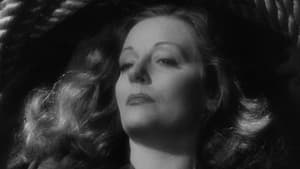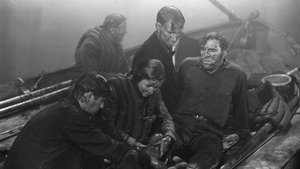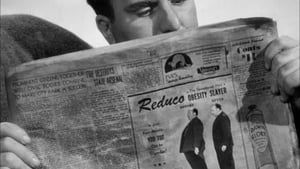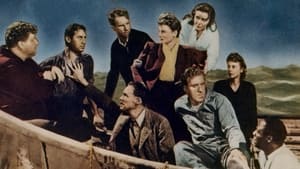Contact: info@alwanfilm.com
Video Sources 0 Views
- Watch trailer
- Lifeboat


Synopsis
Table of Contents
ToggleReview: Lifeboat 1944 Colorized – A Tense and Compelling Tale of Survival

Introduction
Lifeboat, released in 1944, is a gripping wartime drama directed by the legendary Alfred Hitchcock. Set entirely aboard a lifeboat adrift in the Atlantic Ocean, this claustrophobic thriller explores themes of survival, morality, and human nature under extreme circumstances. In this review, we’ll delve into the tense and compelling world of Lifeboat and its enduring impact on cinema.
Check The Full Colorized Movies List
Check Our Colorized Movies Trailer Channel
Understanding Lifeboat 1944 Colorized: Director, Cast, and Genre
Directed by Alfred Hitchcock, Lifeboat features a talented ensemble cast led by Tallulah Bankhead, William Bendix, and Walter Slezak. The film belongs to the survival drama genre, known for its intense portrayal of characters facing life-threatening situations.
Exploring the World of Lifeboat 1944 Colorized: Plot and Characters
Lifeboat follows the survivors of a shipwreck who find themselves adrift in a lifeboat in the middle of the Atlantic Ocean. As tensions rise and resources dwindle, the group must confront their own prejudices and moral dilemmas in order to survive. With each passing day, the true nature of each character is revealed, leading to shocking revelations and unexpected alliances.
The Art of Film Colorization
While Lifeboat was originally filmed in black and white, its early colorized version adds a new layer of depth to its atmospheric visuals. The colorization process enhances the film’s claustrophobic atmosphere and captures the nuances of its characters with striking clarity.
Early Colored Films: A Brief History
The history of early colored films is marked by innovation and experimentation as filmmakers sought to enhance the visual appeal of their movies. From hand-tinted frames to pioneering technicolor processes, the evolution of colorization techniques transformed the cinematic landscape, offering audiences a new way to experience classic films.
Lifeboat (1944) and Its Early Colored Version
The decision to release Lifeboat in a colorized format was made with the intention of immersing audiences in the claustrophobic atmosphere of the lifeboat and enhancing the film’s visual impact. While some purists may prefer the original black and white version, the early colorized edition of Lifeboat adds a new layer of depth to its atmospheric cinematography and captures the moral ambiguity of its characters with breathtaking clarity.
The Debate Over Film Colorization
The debate over film colorization continues to divide audiences and industry professionals alike. While some argue that colorization breathes new life into classic films and makes them more accessible to modern audiences, others maintain that it compromises the artistic integrity of the original work. As technology advances and filmmaking techniques evolve, the debate over colorization remains a topic of ongoing discussion within the film community.
Examining Lifeboat (1944) as an Early Colored Film
Viewing Lifeboat in its early colorized iteration offers audiences a fresh perspective on its claustrophobic atmosphere and morally complex characters. The colorization process enhances the film’s tense atmosphere and captures the psychological depth of its characters with stunning clarity. As viewers are drawn into the confined space of the lifeboat, they are treated to a visual experience that immerses them in the moral dilemmas and ethical quandaries faced by the survivors.
Influence and Legacy: Lifeboat 1944 Colorized’s Impact on Cinema
Lifeboat is widely regarded as a masterclass in suspenseful storytelling that continues to influence filmmakers and inspire new generations of cinephiles. Its claustrophobic atmosphere, morally complex characters, and tense narrative have left an indelible mark on cinema, shaping the way survival dramas are made and appreciated to this day.
Director’s Cinematic Legacy: Beyond Lifeboat 1944 Colorized
Alfred Hitchcock’s directorial legacy extends far beyond Lifeboat, encompassing a diverse body of work that includes acclaimed films such as Psycho and Vertigo. As one of the most innovative filmmakers of his generation, Hitchcock was known for his ability to craft suspenseful narratives that kept audiences on the edge of their seats. Lifeboat stands as a testament to his talent and creativity, solidifying his reputation as one of the great auteurs of classic Hollywood cinema.
Themes Explored in Lifeboat 1944 Colorized
At its core, Lifeboat explores themes of survival, morality, and human nature under extreme circumstances. Through its tense atmosphere and morally complex characters, the film offers a nuanced portrayal of the human condition, challenging viewers to confront their own prejudices and beliefs about right and wrong as they navigate the treacherous waters of the Atlantic Ocean.
Reception and Controversy Surrounding Lifeboat 1944 Colorized
Upon its release, Lifeboat received widespread critical acclaim for its tense atmosphere, morally complex characters, and gripping storyline. While the decision to release the film in a colorized format sparked debate among purists, its enduring popularity has cemented its status as a timeless classic of the survival drama genre.
Where to Watch Lifeboat 1944 Colorized Online
For those eager to experience Lifeboat for themselves, the film is readily available on popular streaming platforms such as Amazon Prime Video, Google Play Movies, and iTunes. Whether viewed in its original black and white format or its early colorized iteration, Lifeboat offers a cinematic experience that is both tense and visually stunning.
FAQs About Lifeboat 1944 Colorized
1. Is Lifeboat based on a true story?
No, Lifeboat is a fictional film that explores the moral dilemmas and ethical quandaries faced by survivors of a shipwreck adrift in the Atlantic Ocean. While the film’s storyline may draw inspiration from real-life events, its characters and plot are works of fiction.
2. Who starred in Lifeboat?
Lifeboat features a talented ensemble cast led by Tallulah Bankhead in the role of the enigmatic journalist Connie Porter. She is supported by William Bendix, Walter Slezak, and a host of other actors who bring the morally complex characters of the lifeboat survivors to life.
3. What is the central message of Lifeboat?
At its core, Lifeboat explores the complexities of human nature under extreme circumstances, challenging viewers to confront their own prejudices and beliefs about right and wrong. Through its tense atmosphere and morally complex characters, the film offers a nuanced portrayal of survival, morality, and the inherent contradictions of the human condition.
4. Why was Lifeboat released in a colorized format?
The decision to release Lifeboat in a colorized format was made with the intention of immersing audiences in the claustrophobic atmosphere of the lifeboat and enhancing the film’s visual impact. While some purists may prefer the original black and white version, the early colorized edition of Lifeboat adds a new layer of depth to its atmospheric cinematography and captures the moral ambiguity of its characters with breathtaking clarity.
5. What is the legacy of Lifeboat?
Lifeboat is widely regarded as a masterclass in suspenseful storytelling that continues to influence filmmakers and inspire new generations of cinephiles. Its tense atmosphere, morally complex characters, and gripping storyline have left an indelible mark on cinema, shaping the way survival dramas are made and appreciated to this day.
6. Are there any sequels or remakes of Lifeboat?
No, there have been no official sequels or remakes of Lifeboat. However, the film’s enduring popularity has inspired countless reinterpretations and homages in various media. Nonetheless, none have captured the claustrophobic atmosphere and moral complexity of the original 1944 classic.
7. Where can I watch Lifeboat online?
For those eager to experience Lifeboat for themselves, the film is readily available on popular streaming platforms such as Amazon Prime Video, Google Play Movies, and iTunes. Whether viewed in its original black and white format or its early colorized iteration, Lifeboat offers a cinematic experience that is both tense and visually stunning.
Conclusion
In conclusion, Lifeboat (1944) stands as a gripping wartime drama that continues to captivate audiences with its tense atmosphere, morally complex characters, and gripping storyline. Whether viewed in its original black and white format or its early colorized iteration, Alfred Hitchcock’s insightful direction and the stellar performances of the cast offer a cinematic experience that is both tense and visually stunning. As viewers are drawn into the confined space of the lifeboat, they are treated to a visceral journey that challenges their beliefs about survival, morality, and the inherent contradictions of the human condition. Lifeboat remains a timeless classic that continues to enthrall and inspire audiences around the world.
